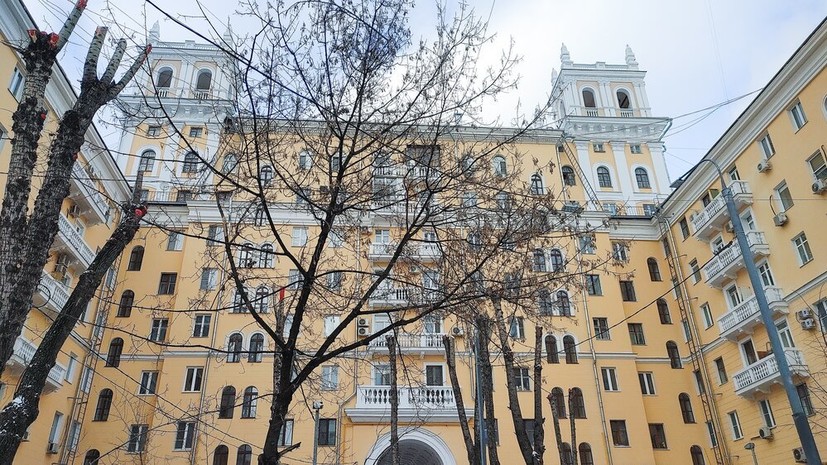Russians have become less interested in buying housing on the secondary market.
This is stated in a study published on Wednesday, March 6, by the Avito Real Estate service.
According to analysts, in 2023 the demand for secondary resale in Russia decreased by an average of 25% compared to 2022.
In particular, the demand for studios in this segment decreased by 7%, one-room apartments - by 26%, two-room apartments - by 28%, three-room apartments - by 22%, and apartments with four rooms or more - by 15%.
As the authors of the report note, of the 33 analyzed cities in the country, the popularity of secondary real estate increased only in St. Petersburg (by 1%).
At the same time, the most noticeable decrease in demand was recorded in Chelyabinsk and Saratov (by 42%), Simferopol (by 38%), Izhevsk (by 37%), Samara (by 36%), Kirov and Moscow (by 35%).
“Interest in housing on the secondary market is decreasing largely due to high interest rates on loans: people more often choose to rent an apartment or options in new buildings thanks to the availability of the Family Mortgage program or other preferential offers,” explained Sergei, head of secondary and suburban real estate at the company Eremkin.
Let us note that if just a year ago the average interest rate on a mortgage for the purchase of a secondary property in Russia was about 11.1%, today the value exceeds 16.9%, according to materials from the DOM.RF company.
For comparison: preferential programs, which operate mainly in the primary market, allow you to obtain a housing loan at 2-8% per annum.
“The secondary market experienced serious difficulties against the backdrop of the fact that the authorities actively supported the primary market through various subsidized programs.
At the same time, the Central Bank systematically tightened monetary policy (MCP), which is why commercial, that is, non-preferential, mortgage rates increased,” explained Oleg Samoilov, vice president of the Russian Guild of Realtors, in an interview with RT.
AGN "Moscow"
Let us remember that last year, to curb inflation, the Central Bank more than doubled the key rate - from 7.5 to 16% per annum.
Due to this tightening of monetary policy, loans in the country always become more expensive, and the profitability of bank deposits increases.
As a result, households and businesses begin to borrow less frequently, spend less and save more, overall economic activity declines, and price pressures should ease over time.
According to the leadership of the Central Bank, in the event of a sustained slowdown in inflation, the regulator will be able to return to lowering the key rate in the second half of 2024 or even slightly earlier.
As Oleg Samoilov believes, if the Central Bank begins to actively soften the monetary policy, and market interest rates on mortgages drop to 10-11% per annum, this may again lead to a revival of demand for secondary housing.
Price gap
However, in the coming months, commercial rates on housing loans will likely continue to remain high, Oleg Samoilov is sure.
Nevertheless, even in these conditions, the old fund still has several important advantages, says Sergei Eremkin.
“Prices in such properties are usually lower, so for the same money you can find options with a larger area or in a better location.
And a decrease in demand gives room for bargaining - an apartment can be bought at a discount of up to 10% from the price initially indicated in the advertisement,” the specialist emphasized.
It is noteworthy that in just a few years the difference between the cost of housing in the primary and secondary markets in Russia has increased almost fivefold - from 9.6 to 44%.
So, if at the end of 2019 1st quarter.
m in a facility under construction was sold on average across the country for 64.1 thousand rubles, and on the secondary market - for 58.5 thousand rubles, then at the end of 2023 the figures reached 140.4 thousand and 97.4 thousand, respectively .
According to experts, one of the reasons for the observed imbalance was the long-term effect of preferential mortgages on new buildings at 8% per annum.
The authorities launched this program in 2020 to support demand for real estate during the pandemic and later extended it several times.
The initiative turned out to be useful in the early stages, but later led to a significant increase in the cost of housing on the primary market.
“It was mortgages with state support that were the main driver of the real estate market in recent years.
It is worth noting that the sector remains one of the most stable in terms of investment: people prefer to store money in concrete because it does not depreciate.
Therefore, even in conditions of cooling demand for resale apartments, apartments in the old stock also continued to rise in price, but at a slower pace than they could,” Valery Tumin, director of Russian and CIS markets at fäm Properties, told RT.
AGN "Moscow"
The current situation with housing prices has already attracted the attention of the Russian government.
According to the country's Finance Minister Anton Siluanov, in the context of a rush to increase the price of square meters, the authorities plan to review the system of mortgage benefits.
“It is important to prevent further distortions in the mortgage market.
To do this, we will concentrate our efforts specifically on the targeted and social focus of support measures,” the head of the Ministry of Finance noted.
According to him, at the end of 2023, the share of preferential programs reached 90% of the total volume of loans issued in the primary market.
The country's leadership, in turn, plans to reduce this figure to 20-25%.
“Specific targets and specific parameters will still be discussed with interested market participants.
But it is important for us to ensure the support of citizens, and not developers and banks,” added Siluanov.

